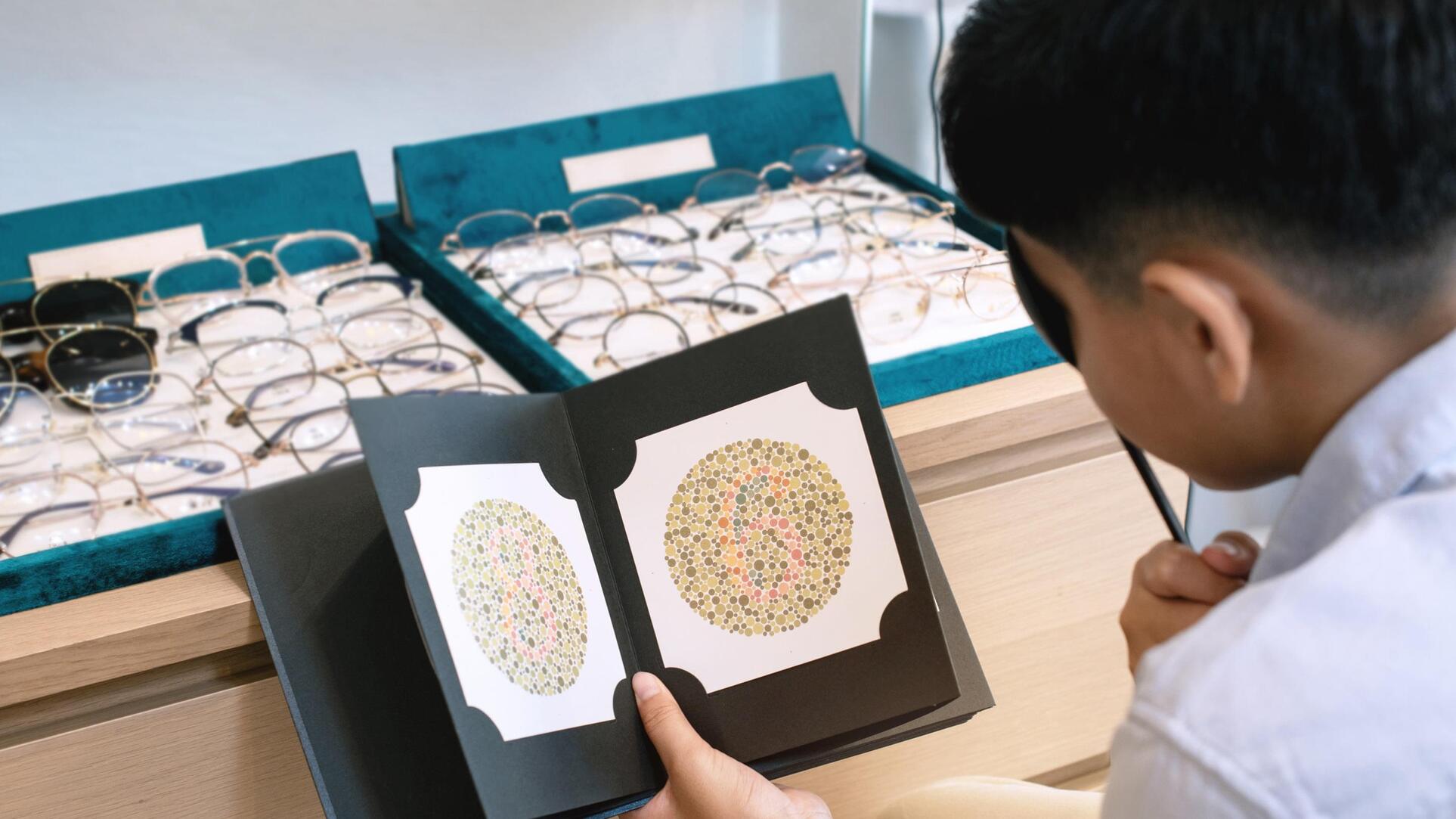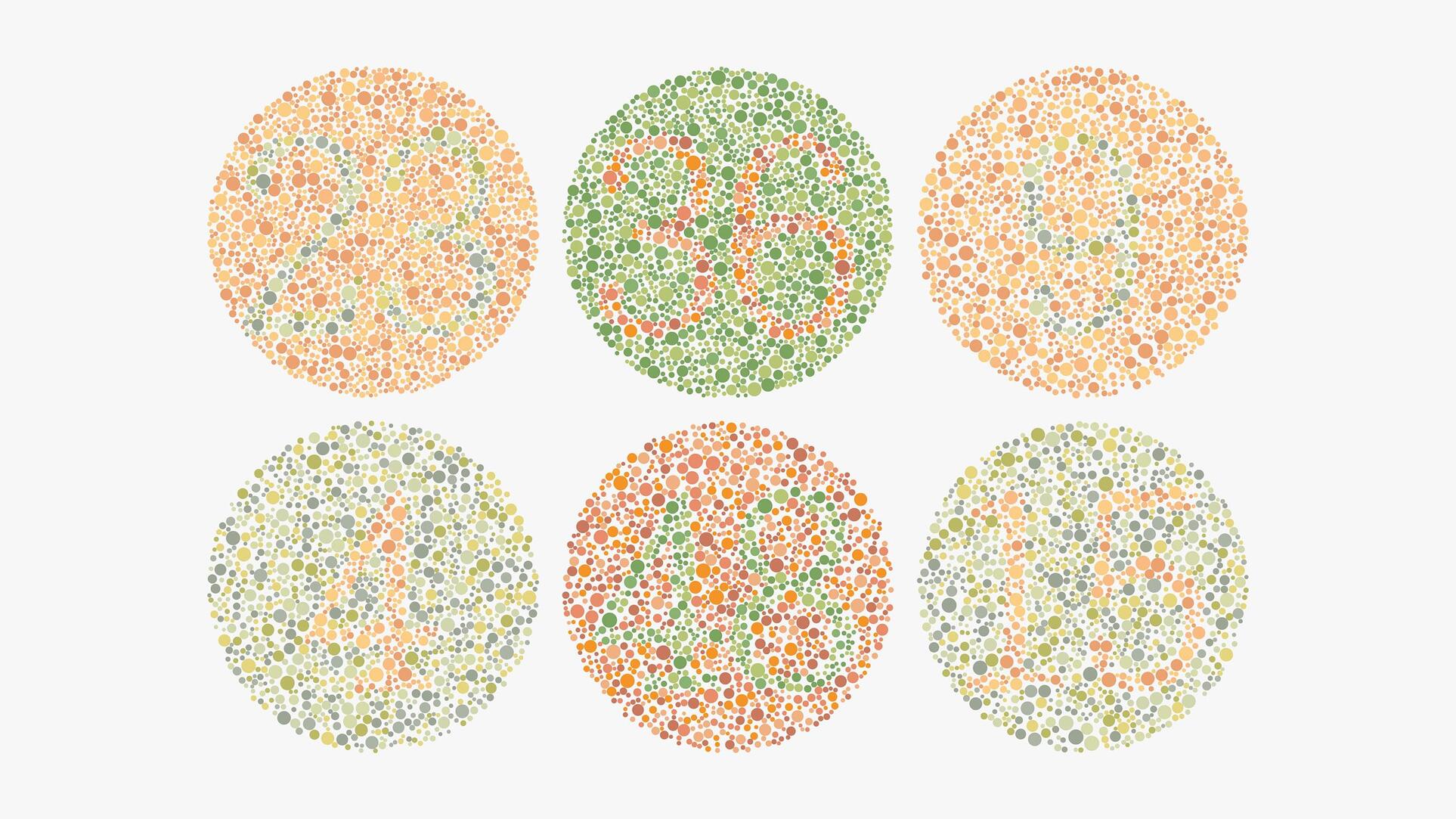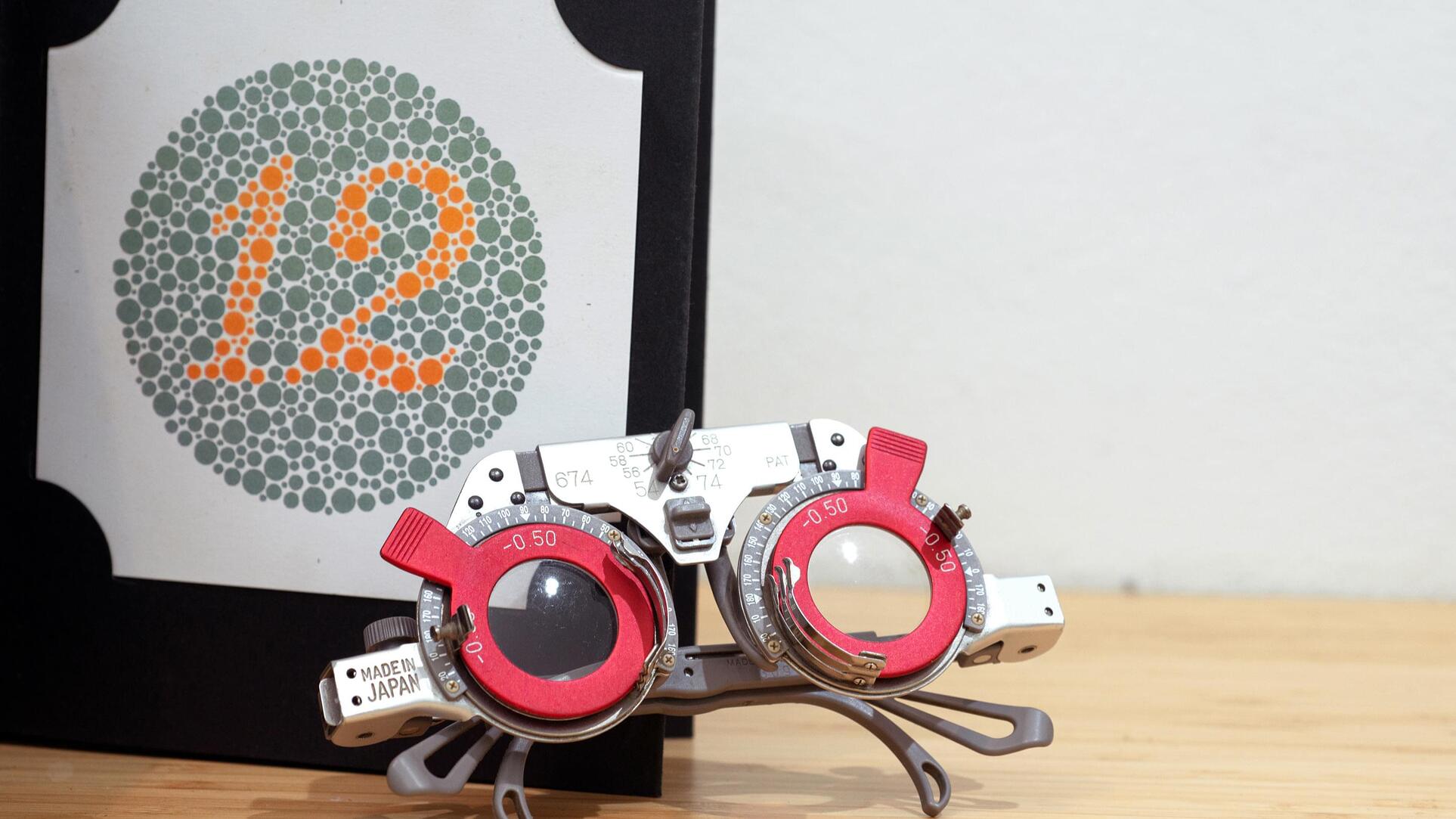
What Are the Different Types of Color Blindness?
Color blindness, also known as color vision deficiency, is a visual impairment that affects a person's ability to perceive colors accurately.
Individuals with color blindness have difficulty distinguishing between certain colors or perceiving subtle color differences. This condition is often caused by abnormalities in the photopigments present in the cone cells of the retina, which are responsible for detecting colors.
In this blog post, we will look at the different types of color blindness, what to do if you believe you have color blindness, and some frequently asked questions.
What are the different types of color blindness?
There are several types of color blindness, each characterized by the specific colors individuals have difficulty perceiving. The color categories are red-green, blue-yellow, or complete color blindness.
Red-Green Color Blindness
Red-green color blindness is the most common type of color blindness, characterized by difficulty distinguishing between red and green colors. There are four types of red-green color blindness:
- Deuteranomaly is the most prevalent type of red-green color blindness. Individuals with deuteranomaly perceive green colors as more red. It is typically a mild condition that does not significantly impact daily activities.
- Protanomaly causes red colors to appear more green and less bright. Similar to deuteranomaly, protanomaly is generally mild and does not interfere with normal activities.
- Protanopia means that the individual cannot differentiate between red and green colors at all. It is a more severe form of red-green color blindness.
- Deuteranopia also results in an inability to distinguish between red and green colors. Like protanopia, it is a more severe type of color blindness.

Blue-Yellow Color Blindness
Blue-yellow color blindness is a less common type of color blindness that affects the differentiation between blue and green, as well as between yellow and red. There are two types of blue-yellow color blindness:
- Tritanomaly makes it challenging to distinguish between blue and green, as well as between yellow and red.
- Tritanopia means that the individual is unable to discern the difference between blue and green, purple and red, and yellow and pink. Additionally, colors may appear less bright.

Complete Color Blindness
Complete color blindness, also known as monochromacy, is a rare condition in which individuals cannot perceive any colors at all. It results in a lack of color vision and can be associated with difficulties in clear vision and increased sensitivity to light.
Please note that the descriptions above provide an overview of the various types of color blindness, but individual experiences may vary. It is always recommended to consult with an eye care professional for an accurate diagnosis and further guidance.
Ready to see an eye care professional? Learn about what to expect at your first visit.
What to do if you think you have color blindness?
If you suspect you have color blindness, it is advisable to consult an eye care professional, such as an optometrist or ophthalmologist.
They can conduct specialized tests, like the Ishihara color test or the Farnsworth-Munsell 100 Hue Test, to diagnose and determine the type and severity of color blindness.
Are you having other issues with your vision? Check out the common causes of vision problems.
What type of color blindness do I have?
A comprehensive eye examination can help identify the specific type of color blindness you have.
Eye care professionals will evaluate your color vision using various tests and assess the patterns of color confusion. Based on the results, they can provide an accurate diagnosis and information about your specific color vision deficiency.
Does color blindness get worse over time?
Color blindness is usually a stable condition that does not worsen over time.
Once diagnosed, the type and severity of color blindness typically remain constant throughout a person's life. However, certain eye conditions or age-related changes in the eye can affect color perception.
Regular eye check-ups are recommended to monitor any changes in visual health.
Do you have eye insurance? Learn if vision insurance is worth it.
Can you cure color blindness?
Currently, there is no known cure for color blindness. However, assistive tools and technologies, such as color-correcting glasses or smartphone apps, can help individuals with color vision deficiency enhance their ability to perceive and distinguish colors.
It's important to note that these aids do not restore normal color vision but can provide improved color differentiation.
How can Yesglasses help with your eye care?
While there is no cure for color blindness, understanding the different types and seeking professional assistance can help individuals manage their condition effectively.
Yesglasses is here to help support you through your eye care journey, connecting people with eyewear that not only improves their eye health, but overall confidence.
Our high-quality lenses come with various coatings such as advanced blue light blocking technology, 100% UVA/UVB protection, and even specialized tinted sunglasses to help improve color visibility in different environments.
Start your eye care journey today with Yesglasses, and shop our high-quality, affordable eyewear options for all your vision needs.
